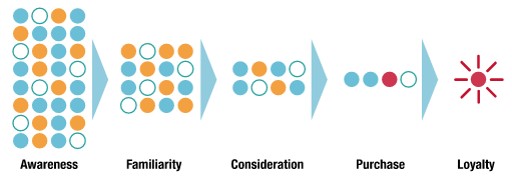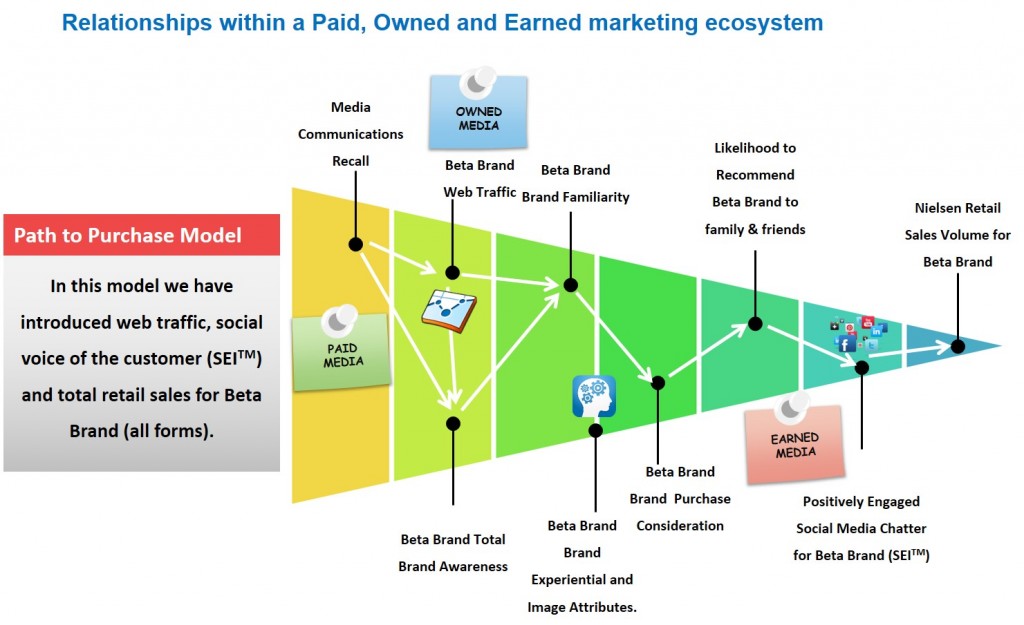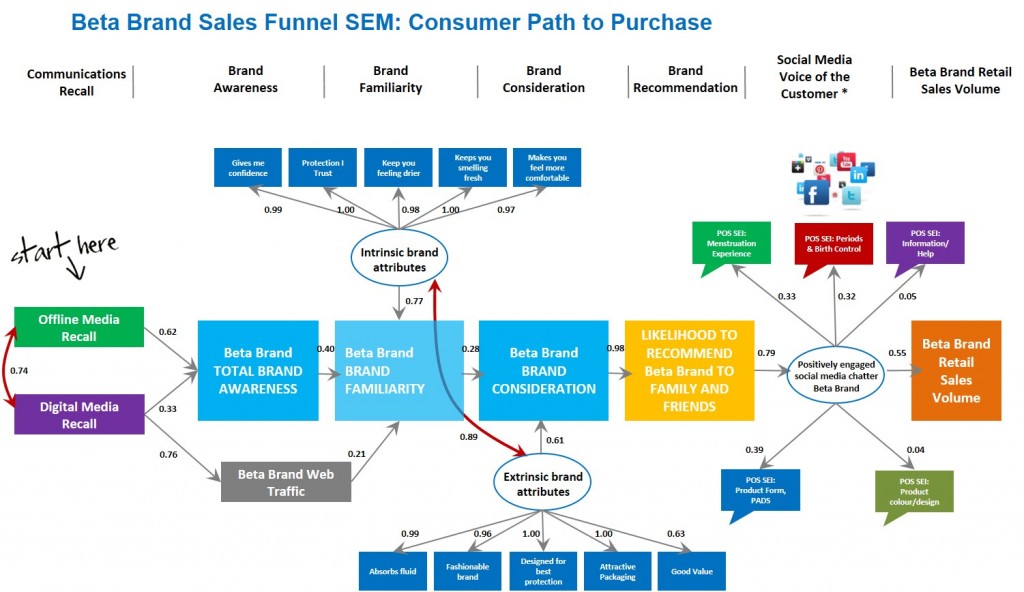Customer Path-to-Purchase & Structural Equation Modeling (SEM)
Successful marketing is, by definition, always aiming at a”moving target”. That is because every customer is on a journey that covers many brand-relevant “touch-points”; which enable these customers to gain awareness, familiarity and consideration; and eventually purchase and acquire direct brand experience, which hopefully will earn that customer’s loyalty. Marketing, therefore, needs to provide the relevant stimulus at each stage of that journey in order to maximize the likelihood of consumer purchase and eventual loyalty conversion.
For the marketer, “mapping” this customer path-to-purchase journey is essential and critical for numerous reasons:
- For gaining deep insight into what customers are doing, how they are engaging your brand and the steps they follow towards purchase and beyond.
- It documents existing and relevant “touch points” and “gates” that customers need to take across different channels prior to purchase.
- It is a vital “blue-print” for the customer-brand experience.
In order to fully comprehend and understand this journey, quantification needs to occur. This quantification requires a precise knowledge of the different stages of the journey, the customer flow and the impact of marketing stimuli affecting each stage.
One such tool is an analytic technique called “Structural Equation Modeling (SEM)”. SEM is an advanced analytical technique that allows us to understand and quantify the causal & synergistic relationships across the path-to-purchase and different channels & customer “touch points”. It is different from regression and other statistical methods because:
- It allows for multiple dependent and independent variables
- That it can be designed across pathways or customer touch points with separate equations.
- It is well suited towards hypothesis testing
- It accounts for variable inter-relationships or synergies
- It can handle multiple data types and sources
- It provides a means for the emergence of latent or unobserved constructs or processes.
The case-study we are focusing on here involves a personal care brand called “Beta”. The traditional “purchase funnel” as shown below, is one of the well known path-to-purchase frameworks. With various data from Brand Beta, we can then construct an SEM model to test this hypothesis and likewise quantify the relationships across that journey and through the various “touch points”. Below illustrates this funnel and a hypothesis of where various media affect these stages.
The SEM we constructed here covers a multitude of different data forms and types:
- Traditional mass media activity
- Digital media activity
- Web traffic and online behavior
- Consumer survey tracking data on brand awareness, brand image and purchase consideration over time
- Social media metrics, using our proprietary Semantic Engagement Index or SEItm for Beta Brand over time
- Retail sales or purchase data for Beta Brand over time
- Customer loyalty and/or “willingness-to-recommend” survey data.
The SEM model covers 7 distinct phases of the “path-to-purchase” customer journey, as shown on the upper column headings. While the above diagram describes and quantifies relationships, the insight comes from “building a story” which describes this “path-to-purchase customer journey”.
The Path-to-Purchase Story
Starting at “Communications Recall” we see the specific impact of Offline Mass Media and Digital Media with respect to “Total Brand Awareness”. The black arrows show the value or relative influence; while the curved red arrows show interactions or synergies between active drivers or variables.
Offline media is shown here to have the dominant impact. As shown, we also learn that there is a measured interaction or synergies that make the total effect of media greater when Offline and Digital Media are synchronized together.
As we also see, Digital Media has an impact on Beta’s web traffic, which in turn is affected by certain “intrinsic brand image attributes”, specifically related to how this personal care brand makes customers feel about the brand. These are also essential in developing brand familiarity.
After familiarity comes the stage where customers bring the brand into their “consideration set”. Here, the major causal drivers include “extrinsic” brand factors including physical product performance, visual attraction and perceived value. Interestingly, value is actually the weaker influence at this stage. Also, all intrinsic attitudes also have an indirect influence toward consideration.
The next stage of this journey is where the customer forms an opinion about Beta Brand with respect to whether they would recommend this product to themselves, family and friends. Shortly thereafter, they begin to divulge their customer experience either informally, or as represented through brand experiential comments on social media. Here, customers will describe the situation and context of their experience with the brand and also how positive or satisfied they were with these experiences. As the model shows, this Social/SEI input occurs immediately before and/or is concurrent with the purchase occasion.
Path-to-Purchase Insights
Understanding and mapping the path-to-purchase is critical for marketers because such an exercise reveals the critical channels and touch-points that influence the consumer’s journey towards purchase. Understanding where marketing affects these stages and by how much is essential for getting a handle on the effectiveness and impact of marketing programs.
Structural Equation Modeling (SEM) is a powerful analytic tool which quantifies the causal relationships driving this customer journey. It provides marketers with an essential blue-print for not only understanding the correct path-to-purchase, but the specific impact that marketing has at each stage of the journey. The results of this exercise enable marketers to accurately tell the story of how and why customers move down this path to purchase and chose their brand.
End.
Michael Wolfe








